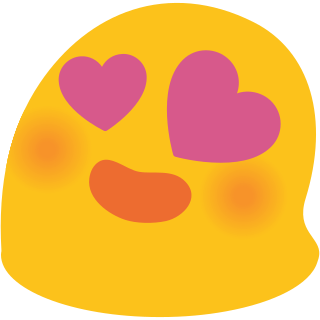
NTT Docomo, Inc., also known as Docomo, is a Japanese mobile phone operator owned by the Nippon Telegraph and Telephone (NTT). The name is officially an abbreviation of the phrase, "do communications over the mobile network", and is also from a compound word dokomo, meaning "everywhere" in Japanese. The company is headquartered in Sanno Park Tower, Nagatachō, Chiyoda, Tokyo. Docomo provides phone, video phone, i-mode (internet), and mail services. It is the largest wireless carrier in Japan, with 82.632 million subscribers as of March 2021.

In Japan, mobile phones became ubiquitous years before the phenomenon spread worldwide. In Japanese, mobile phones are called keitai denwa (携帯電話), literally "portable telephones," and are often known simply as keitai (携帯).

The general prohibition sign, also known informally as the no symbol, 'do not' sign, circle-backslash symbol, nay, interdictory circle, prohibited symbol, don't do it symbol, or universal no, is a red circle with a 45-degree diagonal line inside the circle from upper-left to lower-right. It is typically overlaid on a pictogram to warn that an activity is not permitted, or has accompanying text to describe what is prohibited.
An emoji is a pictogram, logogram, ideogram, or smiley embedded in text and used in electronic messages and web pages. The primary function of modern emoji is to fill in emotional cues otherwise missing from typed conversation as well as to replace words as part of a logographic system. Emoji exist in various genres, including facial expressions, expressions, activity, food and drinks, celebrations, flags, objects, symbols, places, types of weather, animals and nature.
Miscellaneous Symbols is a Unicode block (U+2600–U+26FF) containing glyphs representing concepts from a variety of categories: astrological, astronomical, chess, dice, musical notation, political symbols, recycling, religious symbols, trigrams, warning signs, and weather, among others.
Geometric Shapes is a Unicode block of 96 symbols at code point range U+25A0–25FF.
In computing, a Unicode symbol is a Unicode character which is not part of a script used to write a natural language, but is nonetheless available for use as part of a text.
Unicode contains a number of characters that represent various cultural, political, and religious symbols. Most, but not all, of these symbols are in the Miscellaneous Symbols block.
The regional indicator symbols are a set of 26 alphabetic Unicode characters (A–Z) intended to be used to encode ISO 3166-1 alpha-2 two-letter country codes in a way that allows optional special treatment.
Miscellaneous Symbols and Pictographs is a Unicode block containing meteorological and astronomical symbols, emoji characters largely for compatibility with Japanese telephone carriers' implementations of Shift JIS, and characters originally from the Wingdings and Webdings fonts found in Microsoft Windows.

Pile of Poo (💩), also known informally as the poomoji (slang), poop emoji, or poo emoji, is an emoji resembling a coiled pile of feces, usually adorned with cartoon eyes and a large smile. Originated from Japan, it is used as an expression of various contexts. Some possible uses include: as a response of passive aggressive emotion, for comedic value, as commentary on what's bad, or as its literal meaning.
Dingbats is a Unicode block containing dingbats. Most of its characters were taken from Zapf Dingbats; it was the Unicode block to have imported characters from a specific typeface; Unicode later adopted a policy that excluded symbols with "no demonstrated need or strong desire to exchange in plain text", and thus no further dingbat typefaces were encoded until Webdings and Wingdings were encoded in Version 7.0. Some ornaments are also an emoji, having optional presentation variants.
Emoticons is a Unicode block containing emoticons or emoji. Most of them are intended as representations of faces, although some of them include hand gestures or non-human characters.
Transport and Map Symbols is a Unicode block containing transportation and map icons, largely for compatibility with Japanese telephone carriers' emoji implementations of Shift JIS, and to encode characters in the Wingdings and Wingdings 2 character sets.
Variation Selectors is a Unicode block containing 16 variation selectors used to specify a glyph variant for a preceding character. They are currently used to specify standardized variation sequences for mathematical symbols, emoji symbols, 'Phags-pa letters, and CJK unified ideographs corresponding to CJK compatibility ideographs. At present only standardized variation sequences with VS1, VS2, VS3, VS15 and VS16 have been defined; VS15 and VS16 are reserved to request that a character should be displayed as text or as an emoji respectively.

Face with Tears of Joy (😂) is an emoji that represents a crying with laughter facial expression. While it is broadly referred to as an emoji, since it is used to demonstrate emotion, it is also referred to as an emoticon. Since the emoji has evolved from numerous different designs pre-unicode, it has different names and meanings in different regions and cultures. It is also known as Tears of Joy emoji, lol emoji, joy emoji, laughing emoji, cry-laugh emoji, crying laughing emoji, or the laughing crying emoji. The emoji is used in communication to portray joking and teasing on messaging platforms including Apple's iMessage and Meta's WhatsApp, as well as social media websites such as Facebook, Snapchat, Twitter, and Instagram. The emoji is one of the most commonly used emojis in the Emoticons Unicode block. The Oxford Dictionary recognized the emoji as its Word of the Year in 2015 due to its popular usage, and regarded it as the most popular emoji.
Shigetaka Kurita is a Japanese interface designer often cited for his early work with emoji sets. Many refer to him as the creator of the emoji, a claim that has been clarified in recent years. He was part of the team that created one of the first emojis used solely for communication, a heart-shaped pictogram that appeared on an NTT DoCoMo pager aimed at teenagers. It went on to become the Red Heart emoji.
The implementation of emojis on different platforms took place across a three-decade period, starting in the 1990s. Today, the exact appearance of emoji is not prescribed but can vary between fonts and platforms, much like different typefaces.

The Heart Eyes (😍) emoji is an ideogram that is used in communication to express happiness towards something. The Unicode Consortium listed it as the third most used emoji in 2019.










